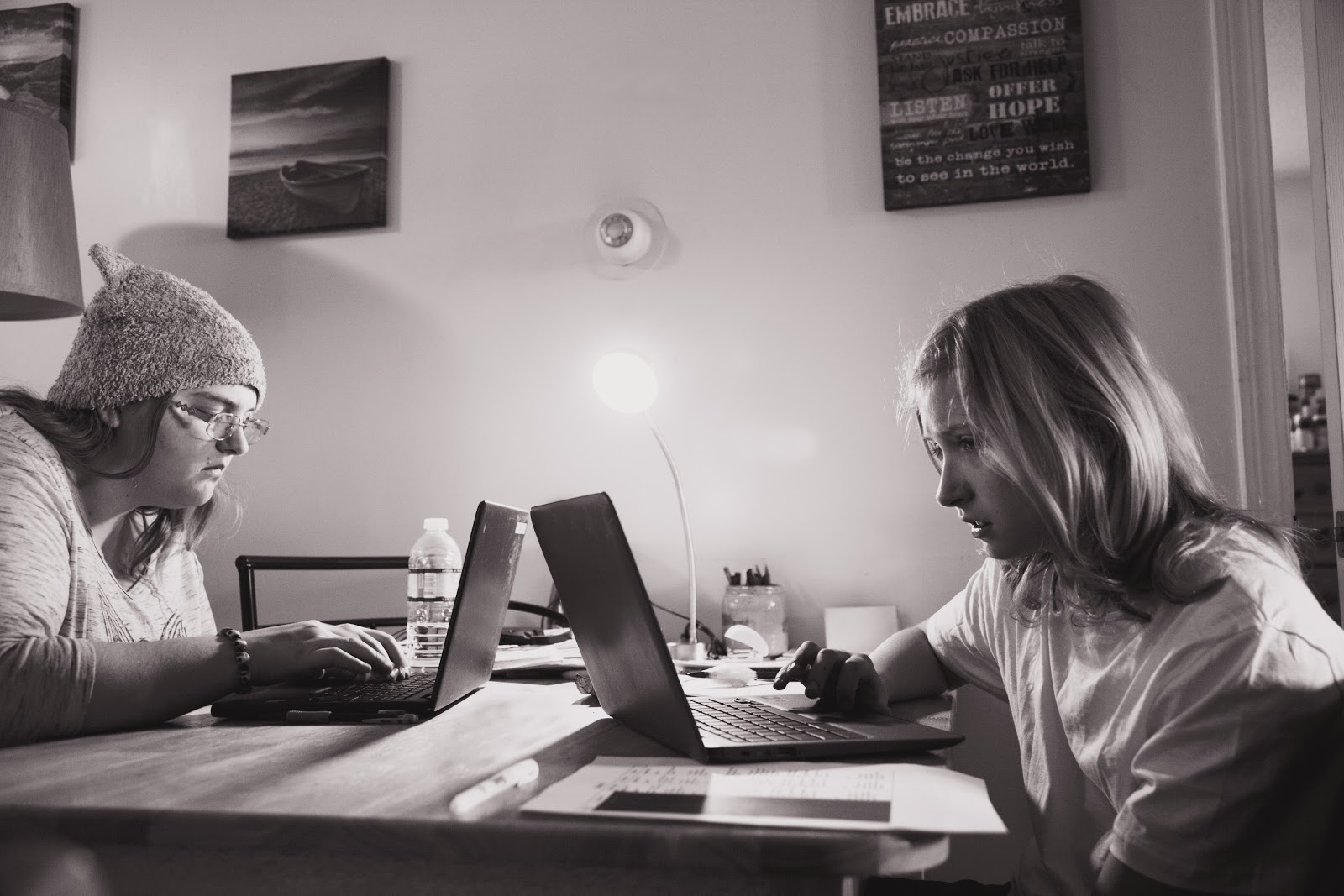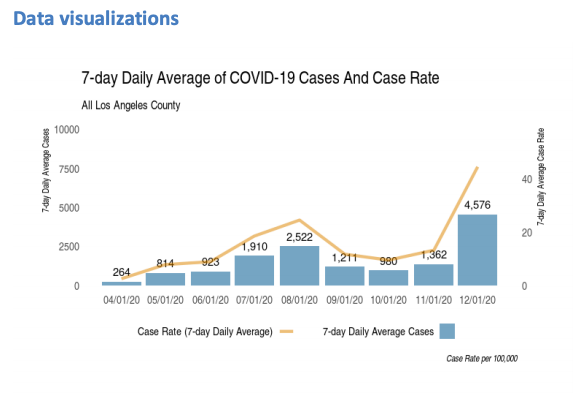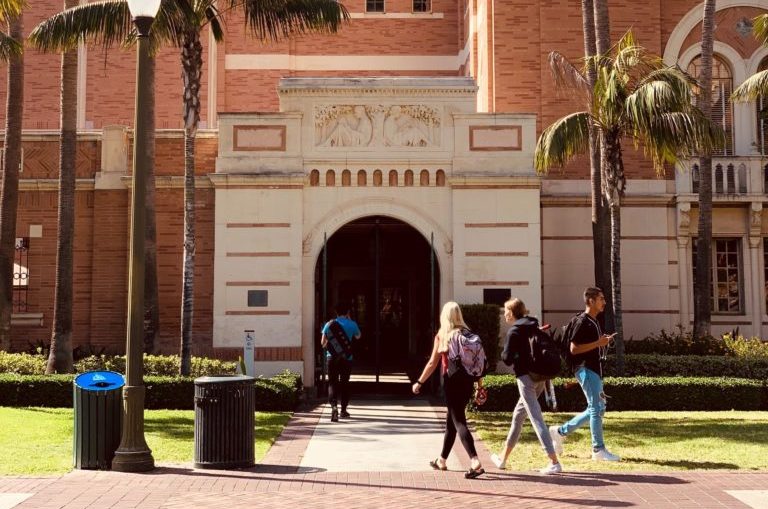By Brianna Chu
When school districts were forced to close as COVID-19 arrived in the U.S. last March, students were thrust into an entirely new world of learning. I spoke with four students from elementary school to high school — Altadena Arts Magnet School students Kaidyn Taylor, a fourth grader, and Harry Daniels, a fifth grader; Chandler School seventh grader Vaughn Cross; and Gabrielino High School junior Emily Casciani — to get a snapshot of what school has looked like for them this past year.
While the students learn at different paces and various levels of difficulty as the grades increase, crossovers in experience abound. All four of the interviewed students cited the inability to easily communicate with teachers as one of the main challenges of learning from home. There is more limited dialogue between students and their teachers, since the primary time they spend with their teacher is with the entire class. While teachers do sometimes have designated online office hours, commonly on Wednesdays, there are impediments that come with the solely virtual connection. Kaidyn, for instance, had dealt with the difficulties of not being able to “figure something out but my teacher’s working with somebody else” during the normal in-person school term; however, the biggest problem for her is that “usually, I ask one of my friends for help,” she explains, “but [now] I can’t do that, either.”

Another significant challenge, especially for Vaughn and Emily, who have higher online workloads, has been maintaining focus and “attention while looking at a screen; it’s much harder than being engaged in a classroom where you can see things happening, watch your teacher, experience the experiments firsthand,” in the words of Vaughn. He uses science as an example: while the experiments have been modified to be reproducible at home, he feels that the experience isn’t quite the same as it would be in school with his class and teacher there.
Archana Basu, clinical psychologist and instructor in the Division of Child and Adolescent Psychiatry at Massachusetts General Hospital and Harvard Medical School, describes: “Children generally learn well when actively engaged and in environments where they feel safe and socially connected. While there’s a lot that one can do online — I think there’s been a huge surge in innovation and adaptation — remote learning requires a level of sustained attention and emotional regulation that is a very big demand, developmentally, for kids in middle school and younger.”
Maintaining or creating those social connections has been the most striking challenge for all the students. Whether “it’s talking to friends or having time to talk to a teacher, you can’t just go outside and say, ‘hey, do you want to do this later;’ you have to type on the computer and it takes a long time to respond,” notes Harry.
Getting used to online learning has been complicated for Vaughn, since he switched schools over the summer. He finished his second semester of sixth grade learning at home as a Saint Mark’s School student, and the pandemic certainly factored into his decision of which middle school to attend going forward. Consequently, one of the main factors prompting his choice of middle school was whether he already had friends there. As a new Chandler student, socializing with his classmates hasn’t really happened at all for Vaughn, either. While he’s been able to get to know more of his class individually while completing group projects together, Vaughn comments: “You can only get to know people so much when working on projects. I can say I know them, but do I really know them as friends? On a personal level?”
The school day, recess, lunch, and after-school arts or sports activities also constitute valuable time for students to spend with their peers, but none of the students I talked to can currently participate in most of their previously-attended extracurriculars. Kaidyn and Harry have been unable to play any of their sports. Vaughn can’t join Chandler’s band or orchestra. Emily hasn’t been able to continue cheer or speech and debate, though she is still working on her Girl Scouts Gold Award and has joined the Associated Student Body at Gabrielino to be more involved with her school community.
Lack of socialization with friends and loved ones has significantly impacted children across the country. A report published by the Center of Disease Control on Nov. 13, 2020 compared the number of mental health-related emergency room or emergency department (ED) visits among all pediatric visits in 2020 to 2019. EDs are “often the first point of care for children’s mental health emergencies,” and the report found that “beginning in April 2020, the proportion of children’s mental health-related ED visits among all pediatric ED visits increased and remained elevated through October. Compared with 2019, the proportion of mental health-related visits for children aged 5–11 and 12–17 years increased approximately 24% and 31%, respectively.”

And it is in this realm of interaction that video games are winning the pandemic. It’s not just kids that sent the sales of the Nintendo Switch and the newest Animal Crossing skyrocketing this summer—adults in spades went on to sell both the game and consoles out as the game became a method of interaction and online friendship. Online co-op video games of all kinds have become the clear winner for virtual connection for kids of all ages during the pandemic.
Harry’s mom, Aimee Daniels, acknowledges that their rules on video games had been more strict pre-pandemic — “video games only on weekends” — but have become more lenient recently as it’s now the primary way for the kids to interact and even just catch up outside of the classroom, as Harry uses his in-game chat to speak with his friends.
Kaidyn and her friends like to call each other and play Prodigy, an educational math game. Mom Jessica Thomas was happy to sign her daughter up for Messenger Kids so Kaidyn could interact more with her friends. “As adults, we [often] don’t think about just how difficult it is for the kids as well,” Thomas says. She definitely sees the difference interaction has, even with her youngest, who’s one. On the days he’s gone to daycare, she’s noticed he’s in a good mood and is ready to go to sleep at the end of the day; but after being home for two to three days in a row, he’s cranky all day.
Emily calls and connects with her friends through FaceTime, and they sometimes play online games like the recently popular Among Us together. And in her case, through these games, her social circle actually grew as she met friends of friends whom she had heard of but hadn’t really spent much time with before.
While both kids and parents — and not to mention teachers, too — are inundated by the extra mental and emotional strain of learning and working from home, ultimately, safety is of the utmost concern for all parties. Emily remarks: “I would like to go back [to school] as soon as possible, but I’m afraid of health concerns that would ruin the experience I once had; if it’s harder to be in person for students and teachers, it may not be worth it.” She’s hoping publicity and usage of the vaccine increases, for everyone’s safety — and her concern isn’t misplaced. The Los Angeles Department of Public Health reported the highest spike in the average number of cases per week in Los Angeles County school districts in December 2020.

COVID-19 has affected Emily’s college search, too. Unfortunately, she hasn’t been able to visit the schools on her list, but she has also been changing her list based on how she’s seen different states and schools handle the pandemic. She is undeterred in her desire to attend college, though; her parents have told her about how formative college was for them, and she wants to be able to experience that, too.
However, whenever she does return to school in-person, Emily feels that the biggest change will likely be “gratitude for being able to see people and have people helping me in person, [and happiness] for what I have in comparison to what I have now [in lockdown].” All of the students eagerly await the day it is safe to return to their classrooms and meet and be reunited with their classmates; but for now…maybe it’s okay to cut the kids a little slack for all that time spent playing video games.







